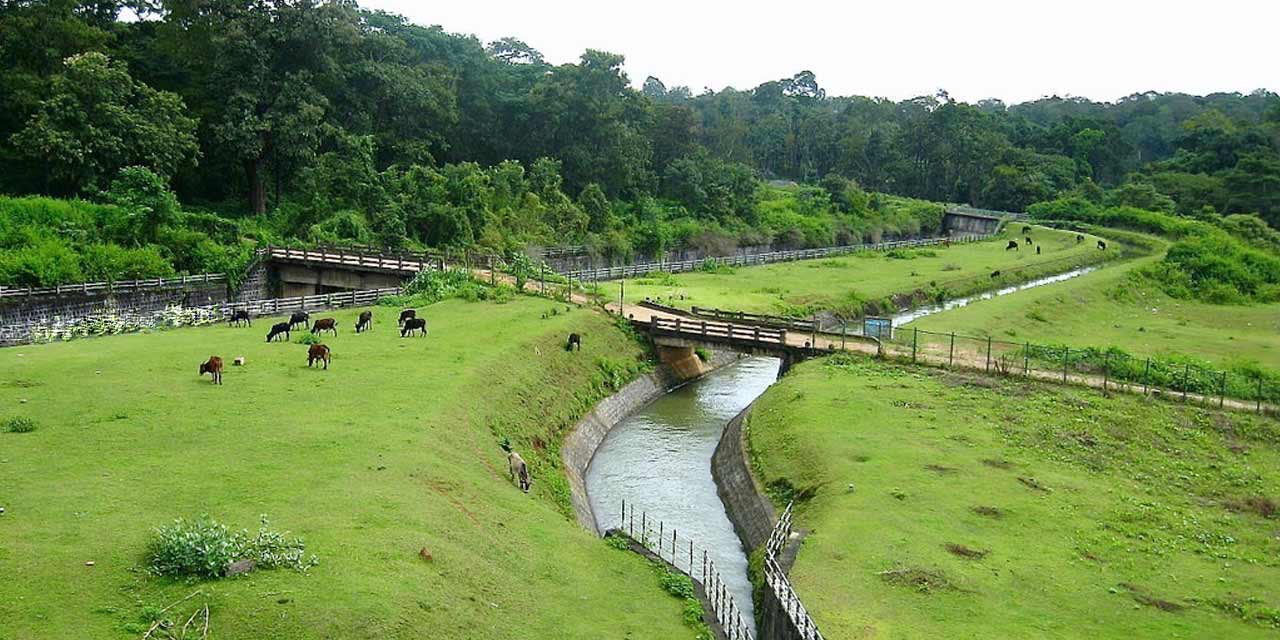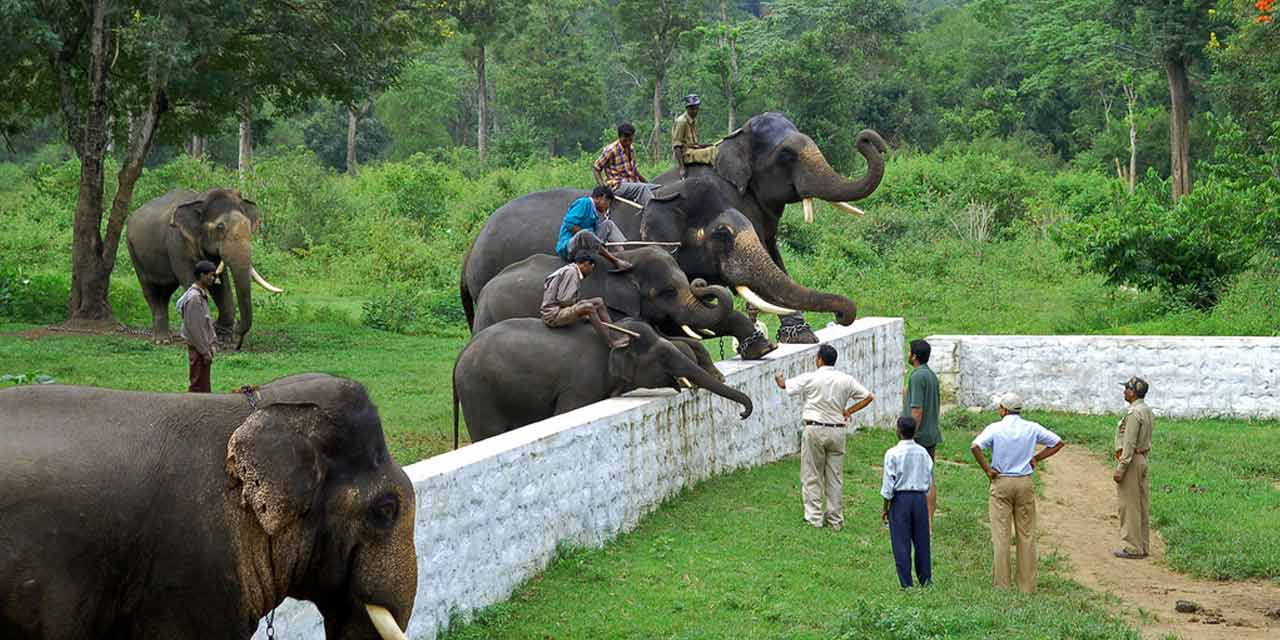
Coorg : A Beautiful Place To Visit In Summer
Coorg is a tiny, isolated, mountainous district in southwest India, bounded on the east by the high Mysore Plateau, averaging an elevation of 1,000 meters, and on the west by a mountainous frontier 30-50 kilometers from the western coast. Its greatest length, north to south, is about 100 kilometers, and its greatest breadth, east to west, is 65 kilometers.

The Western Ghat mountain range runs from north to south and its many spurs strike out in all directions through the small province, now a district of Karnataka State. The main rivers, the Kveri and Laksmanatirtha, are shallow and unnavigable.

The Coorg year is divided into three seasons—cold, hot, and rainy—with a marked variation in rainfall in the various regions. The average yearly temperature ranges from 10° to 27° C. Coorg is primarily an agricultural country with coffee and rice being the main products. Coorg contains dense forests of bamboo, sandalwood, and cardamom. Fauna includes elephants, tigers, panthers, boars, and deer.
The early history of Coorg can be traced back to the ninth century a.d. and consists of a succession of feudal rulers leading up to the dynasty of the Lingayat rajas beginning in the 1600s. The last survivors of the dynasty were the brothers, Doddavirarajendra (died 1809) and Lingarajendra (died 1820). The heir to the throne, a daughter, Devammaji, was 10 at the time of her father’s death and the throne was therefore usurped by an uncle.

The uncle, Lingarajendra, was succeeded by his son Chikkavirarajendra (Vira Raja II) who was poorly accepted by his subjects. This led to the eventual annexation of Coorg by the British in 1834. The annexation led to a number of economic, political, and social reforms, one of the most prominent being the abolition of slavery.

There are three levels of territorial group; the village is the smallest and the most important. Villages, which are multicaste, contain a number of ancestral estates, each comprised of a main house of stone and wood and nearby servants’ huts of mud and bamboo. The nad, consisting of several villages, is the next larger group.

In the 1931 census 94 percent of the population of Coorg lived in such villages. Traditionally Coorg was divided into thirty-five nads and twelve kombus, which serve judicial purposes. Every village has a council of elders that is presided over by a headman whose position is hereditary.

There are two towns in Coorg: Mercara, (or Madikeri) with a population of 7,112; and Virarajpet, with 4,106 persons (as of 1931). Mercara lies in the north-central portion of the region. Virarajpet is the most important commercial center today. Of the total 1931 population of 163,327, 89 percent were Hindus, 8 percent Muslims, and 2 percent Christians. The number of Kodagu speakers was listed as 72,085 in the 1971 census. The primary languages spoken in Coorg are Kodagu, Kannada (Dravidian language), Hindi, and English.

Coorgs consider themselves to be Kshatriyas, who constitute the caste of rulers and soldiers in the traditional hierarchy and rank below only Brahmans. Today Coorgs are some of the prominent military leaders in India. There are more than forty main castes and tribes in Coorg. The caste system is no longer rigidly adhered to. Within a village there is a great deal of cooperation between okkas (family units), especially during holidays or in times of disaster or mourning; however, feuds between nads were formerly common.

The traditional nuclear unit of Coorg society is the okka or patrilineal joint family. Only male members of an okka have any rights in the ancestral estate; women born into the okka leave it upon marriage. No woman may be head of an okka. There is sexual division of labor, with men working outside and women inside the house. The sexes are generally segregated.

Since independence new laws have given women full equality with men; however previous traditions such as arranged marriages are still the norm. The okka commonly consists of two to three generations of agnatically related males, their wives, and their children. All members of an okka are descended from a common ancestor and the spirits of the dead ancestors are regarded with great reverence. Each okka has an ancestral house. This ancestral house is regarded as sacred to a Coorg and has a distinctive architectural design. Ancestor shrines (kaimada ) and ancestor platforms (karanava ) are located near it.

For the Coorgs, the external world is divided into two parts, the sacred and the nonsacred. The sacred includes good sacredness as well as bad sacredness. The Kodagu term for ritual purity is madi ; the term for ritual impurity is pole. The ritual act of mangala is important in Coorg culture. Every mangala marks a change in the social personality of the individual; he moves from one position in the social system to another.

The rite surrounding the mangala represents approval by the social group of the individual’s change in social position. The mangala formerly celebrated several kinds of events: attainment of adulthood; construction of a new house; or marriage. Today it is performed primarily at marriage. An individual example of a part of the mangala, murta, is the salutation offered in greeting. The festivals of village deities and the harvest festival (Huthri) are the most important celebrations of villages.

Village deities are commonly known by reference to the village in which they have a shrine, and they are an all-India phenomenon. The most common in Coorg are Bhagavati (Povvedi) and Ayyappa (or Shasta). It is common for two or three villages to combine in celebrating the festival of a village deity, which can last for seven to twenty-one days.

Every stage of cultivation of the rice crop is marked by ritual, but the most important is Huthri, which is performed when the paddy sheaves are cut and harvested. Every family member returns to the ancestral home for the celebrations. The ceremony includes a purification process, the donning of traditional dress, and a salutation and offering to the elders.

Post Your Comments